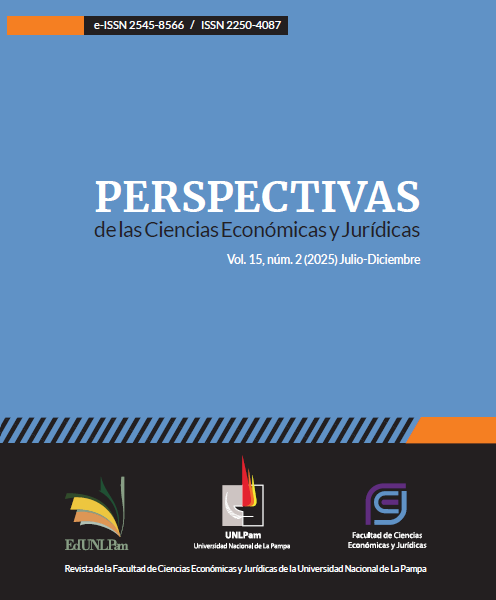Efeito imediato da capacitação de líderes sobre seus níveis de comprometimento
DOI:
https://doi.org/10.19137/perspectivas-2025-v15n2a04Palavras-chave:
comprometimento, líderes, treinamento, habilidades interpessoaisResumo
O objetivo deste estudo foi analisar a influência imediata do treinamento em habilidades sociais no nível de comprometimento dos líderes de organizações na Argentina. Para isso, foi implementado um questionário de comprometimento adaptado da Escala de Comprometimento no Trabalho de Utrecht. Os líderes foram avaliados antes e depois de participarem de programas de treinamento em habilidades sociais. Os resultados indicam uma relação positiva e significativa entre o treinamento e o aumento do comprometimento organizacional. Os líderes mostraram uma melhora de 2% em seu comprometimento. Essa descoberta sugere que o investimento no desenvolvimento de habilidades interpessoais, além de fortalecer a liderança, pode ser uma estratégia eficaz para aumentar o comprometimento dos líderes. Isso é especialmente relevante, dada a influência que os líderes têm na geração de comprometimento em suas equipes.
Downloads
Referências
Bakker, A. B.; Oerlemans, W. (2011). Subjective well-being in organizations. In K. S. Cameron & G. M. Spreitzer (Eds.), The Oxford Handbook of Positive Organizational Scholarship (pp. 178-189). New York: Oxford University Press. https://doi.org/10.1093/oxfordhb/9780199734610.013.0014
Bakker, A. B.; Albrecht, S.; Leiter, M. P. (2011). Key questions regarding work engagement. European Journal of Work and Organizational Psychology, 20(1), 4–28. http://dx.doi.org/10.1080/1359432x.2010.485352
Bakker, A.B.; Demerouti, E. (2008). Towards a Model of Work Engagement. Career Development International, 13, 209-223. http://dx.doi.org/10.1108/13620430810870476
Bates, S. (2004). Getting engaged. HR Magazine, 49(2), 44–51.
Cropanzano, R.; Mitchell, M.S. (2005). Social exchange theory: an interdisciplinary review. Journal of Management, Vol 31, pp874-900.
Giraldo, V.; Pico, M. (2012). Engagement vínculo emocional del empleado con la organización. Universidad de La Sabana. Intellectum. https://intellectum.unisabana.edu.co/handle/10818/3957
González Romá, V.; Schaufeli, WB.; Bakker, AB.; Lloret, S. (2006). Burnout y engagement en el trabajo: ¿factores independientes o polos opuestos? Revista de comportamiento vocacional, 68 (1), 165-174. http://dx.doi.org/10.1016/j.jvb.2005.01.003
Hobfoll, S. E. (2001). The influence of culture, community, and the nested-self in the stress process: Advancing conservation of resources theory. Applied Psychology: An International Review, 50, 337-421. http://dx.doi.org/10.1111/1464-0597.00062
Kahn, WA. (1990). Psychological conditions of personal engagement and disengagement at work. Academy of Management Journal, 33(4), 692–724. http://dx.doi.org/10.2307/256287
Kahn, W.A. (1992). To Be Fully There: Psychological Presence at Work. Human Relations, 45, 321-349. http://dx.doi.org/10.1177/001872679204500402
Kobasa, S.C. (1982). The hardy personality: Toward a social psychology of stress and health. En G. S. Sanders y J. Suls (Eds.): Social psychology of health and illness (pp. 3-32). Hillsdale, NJ, Lawrence Erlbaum Associates. http://dx.doi.org/10.4324/9780203762967-5
Lee, R.; Ashforth, B. E. (1996). A meta-analytic examination of the correlates of the three dimensions of job burnout. Journal of Applied Psychology, 81, 123–133. http://dx.doi.org/10.1037//0021-9010.81.2.123
Maslach, C.; Schaufelli, WB.; Leiter, MP. (2001). Desgaste laboral, Revisión anual de psicología, vol. 52, págs. 397-422.
Montoya Zuluaga, P. A.; Moreno Moreno, S. (2012). Relation between burnout syndrome, coping strategies and engagement. Psicología desde el Caribe, 29(1), 205-227.
Ouweneel, E.; Le Blanc, P.M.; Schaufeli, W.B. (2012). Don’t leave your heart at home: Positive emotions, resources, and engagement at work. Career Development International, 16, 537-556. http://dx.doi.org/10.1108/13620431211280123
Richman, A. (2006). Everyone wants an engaged workforce how can you create it? Workspan, Vol 49, pp36-39.
Robinson, D.; Perryman, S.; Hayday, S. (2004). Los impulsores del compromiso de los empleados, Instituto de Estudios Laborales, Brighton.
Rothbard, NP. (2001). ¿Enriquecimiento o agotamiento? La dinámica del compromiso en el trabajo y la familia, Administration Science Quarterly, vol. 46, págs. 655-84.
Russell, J. A.; Carroll, J. M. (1999). On the bipolarity of positive and negative affect. Psychological Bulletin, 125(1), 3–30. http://dx.doi.org/10.1037//0033-2909.125.1.3
Schaufeli, W.B.; Bakker, A.B. (2004). Job demands, job resources, and their relationship with burnout and engagement: a multi-sample study. Journal of Organisational Behaviour, Vol 25, pp293-315. http://dx.doi.org/10.1002/job.248
Schaufeli, W.B.; Bakker, A.B. (2003). Utrecht Work Engagement Scale: Preliminary manual. Utrecht: Occupational Health Psychology Unit, Utrecht University. http://dx.doi.org/10.1037/t05561-000
Schaufeli, WB.; Salanova, M.; Gonzalez‐Roma, V.; Bakker, AB. (2002). The measurement of engagement and burnout: a two sample confirmatory factor analytic approach. Journal of Happiness Studies, 3, 71–92.
Suharti, L.; Suliyanto, D. (2012). The Effects of Organizational Culture and Leadership Style Toward Employee Engagement and Their Impacts Toward Employee Loyalty. World Review of Business Research, 2(5), 128-139.
Publicado
Edição
Seção
Licença
Aquellos autores/as que tengan publicaciones con esta revista, aceptan los términos siguientes:- Los autores/as conservarán sus derechos de autor y garantizarán a la revista el derecho de primera publicación de su obra, el cuál estará simultáneamente sujeto a la Licencia de reconocimiento de Creative Commons que permite a terceros compartir la obra siempre que se indique su autor y su primera publicación esta revista.
- Los autores/as podrán adoptar otros acuerdos de licencia no exclusiva de distribución de la versión de la obra publicada (p. ej.: depositarla en un archivo telemático institucional o publicarla en un volumen monográfico) siempre que se indique la publicación inicial en esta revista.
- Se permite y recomienda a los autores/as difundir su obra a través de Internet (p. ej.: en archivos telemáticos institucionales o en su página web) antes y durante el proceso de envío, lo cual puede producir intercambios interesantes y aumentar las citas de la obra publicada. (Véase El efecto del acceso abierto).











.png)



5.jpg)












